Drought Toolkit

WRD IS DROUGHT RESILIENT
As California goes through yet another drought, it’s up to all of us to do our part to conserve water.
We want to assure you that the Water Replenishment District (WRD) is doing its part too. WRD is drought resilient and uses a sustainable local supply of water for groundwater replenishment purposes. We are able to accomplish this through the use of recycled water and stormwater capture, both used for replenishing our groundwater aquifers.
WRD has three water treatment facilities: the Albert Robles Center for Water Recycling & Environmental Learning (ARC), the Leo J. Vander Lans Advanced Water Treatment Facility (LVL AWTF), and the Robert W. Goldsworthy Groundwater Desalter. All three facilities played a role in our Water Independence Now (WIN) program which sought to create a locally sustainable groundwater supply in southern Los Angeles County. WRD is now focused on the WIN 4 ALL program which will feature partnerships with local water agencies to create a locally sustainable supply of water for the LA Basin.
Even with this ongoing work to drought-proof the region, there is still a lot that you can do to help alleviate the drought. Please use this page as a drought toolkit and learn how you can get involved.

WHAT CAN I DO DURING THE DROUGHT?
Over the decades, LA County residents have made great strides in conserving water. Although the City of Los Angeles has grown by over one million residents since the 1970s, we still use about the same amount of water (NRDC). However, with drought conditions in over 80% of the state, it's important we continue to find places to save.
We know how to do this. Statewide, total urban water use has been falling for years, even prior to the recent droughts. The average daily urban water use fell from 231 gallons per person in 1990 to 180 gallons per person in 2010, and to 146 gallons in 2015 (Public Policy Institute of CA). When looking more narrowly at average daily residential water use, the averages are down nearly 20% from 108 gallons per person in 2014 to 86 gallons per person in 2020 (Water Boards).
We can continue this legacy of conservation by making some changes at home. Take a look at our Drought Toolkit below to see how you can meet the Governor’s challenge to reduce your water use by 15%. By taking action, we can continue these downward trends to meet the new statewide goal of using 55 gallons per day for indoor water use by 2023 (Water Boards).
Pro Tips to Get You Started
- Watch: Take a look at the tips below and the videos from our Board Directors and friends of the District to get started today.
- Get Informed: For more in-depth drought-fighting tips, look at our sections below to see how you can make a difference.

Our local leaders are taking part in the WRD Drought Awareness campaign by sharing drought tips that are easy to implement at home.
Our local leaders are taking part in the WRD Drought Awareness campaign by sharing drought tips that are easy to implement at home.

How much water are we using on a daily basis? You may be surprised to find out.
Understand Your Water Footprint
We use water from the moment we wake up and use the bathroom, to brushing our teeth before bed. We turn on the tap every day and water comes out without fail. But just how much water are we using on a daily basis? You may be surprised to find out.
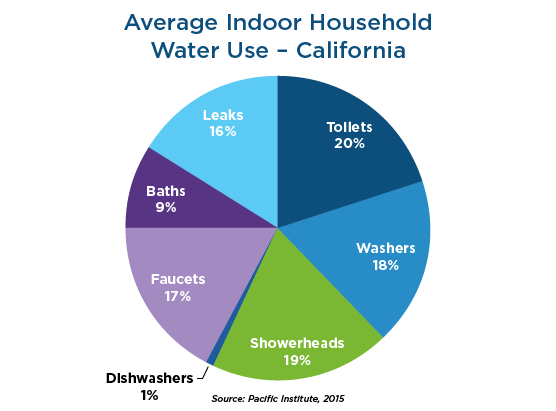
Indoor Water Use
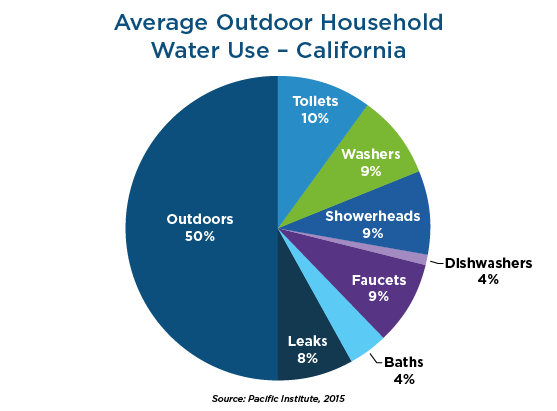
Average water use by indoor appliance:
- Toilets: 1.6 gallons per flush
- Showers: 2.0 gallons per minute
- Faucets: 2.2 gallons per minute
- Dishwasher: 8 gallons per load
- Laundry: 20 gallons per load
Outdoor Water Use
On average, 50% of Californians’ residential water use is for outdoor landscaping. Imagine 50% of all the water you use, and 50% of the money you spend on your water bill, is being used outside.
- Hose:
~ 10.5 gallons per minute (1/2-inch hose)
~ 17 gallons per minute (5/8-inch hose)
~ 31 gallons per minute (3/4-inch hose)
- Regular Sprinklers:
~ 13 to 15 gallons per minute
- High-Efficiency Nozzles:
~10 (30% less than regular nozzles) gallons per minute
- Drip Irrigation:
~1 to 4 gallons per hour
Calculate Your Water Footprint!
Californians use around 85 gallons of water per day for residential use. But remember, that doesn’t cover your full water footprint, which would include items like how far you drive, how much you shop, and how much meat you eat. Calculate your water footprint by using the handy dandy calculators below, or calculate your own water use manually as a family activity using the Eco Kids online worksheet!
Automatically Calculate Your Water Footprint Using Online Calculators
- Be Water Wise Calculator
- GRACE Water Calculator
- Alliance for Water Efficiency Water Calculator
- Water Filter Portal Water Calculator
Manually Calculate Your Water Footprint Using this Family-Friendly Eco Kids Activity

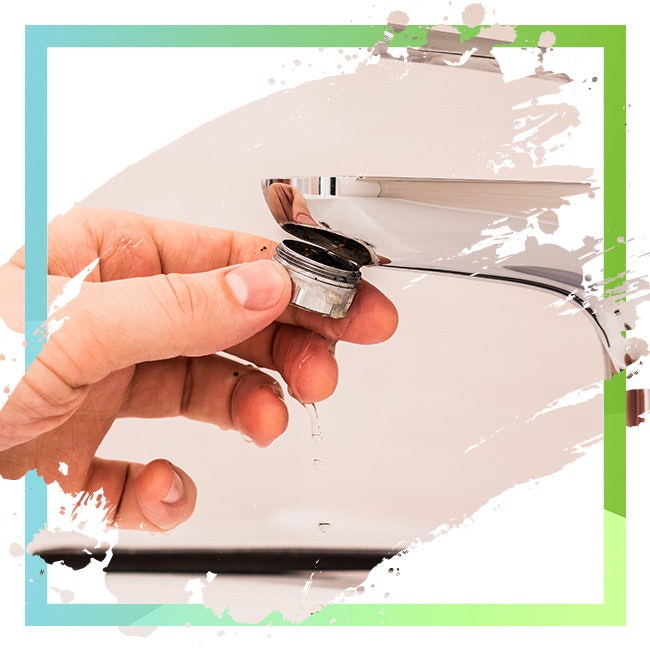
You can continue to live your daily routine while the appliance or device saves water for you.
Let the Device Do the Saving
Installing a water-saving device is the easiest way to lower your water footprint. You can continue to live your daily routine while the appliance or device saves water for you!
Water use devices can be installed both indoors and outdoors for maximal savings. WaterSense, a label for water-efficient products and resources, is a voluntary partnership program sponsored by the U.S. Environmental Protection Agency. Look for the WaterSense label on products and services for your home!
Outdoor Water-Saving Practices & Devices
Outdoor water use accounts for over half of the average household’s total water use. Replace old, high-water-use devices with efficient, water-saving devices. WaterSense-certified efficient sprinklers, drip lines and smart irrigation controllers can help reduce consumption by watering the amount plants actually need and where they need them.
- Use a leak-proof garden hose nozzle. Make sure you have a nozzle that can be turned on and off, and that there are no leaks.
- Water early or late in the day to prevent water loss through evaporation.
- Use a broom to clean your driveway instead of hosing it down.
- For traditional garden hose sprinklers, use a timer to make sure the sprinkler isn’t on for longer than you wanted.
- Make sure sprinklers are turned to spray on the lawn or garden only, not on sidewalks or driveways.
- Install rainbarrels or cisterns (see rebates and programs below)
- WaterSense High-Efficient Spray Sprinkler Models
- WaterSense Weather-Based Irrigation Controller Models
- WaterSense Soil Moisture-Based Irrigation Controller Models
- Metropolitan Water District's Rain Barrel/Cistern Rebates
- West Basin Municipal Water District Rain Barrel Home Delivery Program
- Need help? If it’s in your budget, consider hiring a certified landscape contractor to help you save water and assist with the installation of water-efficient devices. It can be overwhelming to try to upgrade your system on your own! There are reputable certification programs for such contractors:
- WaterSense
- California Landscape Contractors Association
- Irrigation Association
- Qualified Water Efficient Landscaper
Indoor Water Saving Practices & Devices
Indoor water use depends on the amount of people in a household, their personal water use habits and the types of devices being used. Consider WaterSense-labeled products for your everyday use and teach your family to run the faucet as little as possible.
- Install an aerator to your bathroom and kitchen faucets. This small device reduces the water coming from your taps by about 30%.
- Take 5-minute showers.
- Check your toilets and faucets for leaks.
- Put a brick or inflatable bladder in your toilet tank to reduce the volume of water per flush.
- Wash full loads of laundry and dishes.
- Turn off the tap while brushing your teeth or shaving.
Sign up for one of WRD's sustainable landscaping classes today!

Sign up for WRD’s Eco Gardener Classes!
Make your beautiful garden the envy of your neighbors while simultaneously saving water and creating a productive ecosystem in your backyard! The Lillian Kawasaki Eco Gardener Program teaches homeowners about the multiple benefits of planting a sustainable garden through a series of free classes. You can visit the Eco Gardener webpage for full details.
The Eco Gardener program educates residents on five popular topics:
- Sustainable Landscape Design
- Edible Gardening
- Irrigation Basics
- Drought-Tolerant Plants
- Winter Gardening
There are so many beautiful plant species that use much less water than traditional gardens and provide habitats for local pollinators!

CA Native Plants Resources
California native plants thrive in our climate and soil, which bring many benefits. They attract native wildlife, produce less harmful garden toxins, prevent urban runoff, and require minimal water and maintenance after being well established.
To get started with CA native plants in your yard, start by looking at some of the following resources.
- Metropolitan Water District’s CA Native Plant Profiles Guide
- Metropolitan Water District’s FREE CA Friendly Maintenance Book (English)
- Metropolitan Water District’s FREE CA Friendly Maintenance Book (Spanish)
- Western Municipal Water District’s SoCal Yard Transformation Book (English)
- Western Municipal Water District’s SoCal Yard Transformation Book (Spanish)
- California Native Plant Society’s Plant ID Resource
- California Native Plant Society’s Rare and Endangered Plants Resource
- California Native Plant Society’s Manual of CA Vegetation Resource
- Theodore Payne Foundation’s CA Native Plant Guide
- Visit the Palos Verdes Peninsula Land Conservancy
Drought-Tolerant Plants Resources
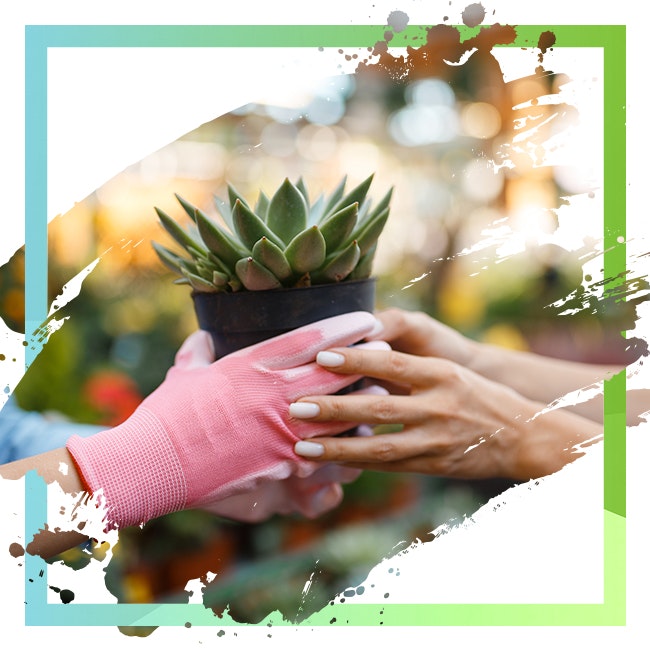
Drought-tolerant plants are low-water-use plants that can alleviate the high demand of watering a landscape. They adapt to California’s climate and microclimates, which means they can survive a drought. After establishment, these plants require minimal water and low maintenance.
To get started with drought-tolerant plants in your yard, start by looking at some of the following resources.
- LA County Waterworks District No. 29’s Drought Tolerant Plants Guide
- Gardener’s Path Drought Tolerant Plant Guide
- The Gold Hive’s SoCal Garden Guide
- Mostly Natives Nursery Drought Tolerant Plants Guide
- BrightView’s Top Drought Tolerant Plants List
- UC Sea Grant Cooperative Extension’s Drought Tolerant Plants Guide
- UC Davis’ Department of Plant Sciences Research

Lawns are largely the reason that 50% of our water use goes to outdoor landscaping. Changing out your lawn can result in big savings!
Grass requires a lot of water in order to grow green and healthy. There are other ways to have an attractive lawn while saving water and money. Replacing existing grass with drought-tolerant or native landscaping is a good way to save on a water bill and have a drought-resistant yard. Start with a section if you're not ready to do the whole yard.
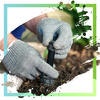
Water providers want to help you save water. Many offer rebates for water-saving devices.
Did you know your water provider, city, or county may offer rebates for water-saving devices? There are many water-efficient rebates and incentives available for homeowners. You buy the device and report it to the agency, then they send you a rebate for doing your part!

Find out what grows best in your area by exploring local nurseries and botanical gardens.
Planting the right plant for the right place is an important factor when it comes to saving water in your landscape. Visit your local nurseries and they’ll tell you what grows best in your area. Similarly, botanical gardens provide a visual insight on the various plant species and plant habitats that thrive in California. They’re great places to visit and family-friendly.
- Madrona Marsh Preserve and Nature Center
- The South Coast Botanic Garden
- The Los Angeles County Arboretum & Botanic Garden
- The Huntington Library, Art Museum, and Botanical Garden
- Descanso Gardens
- Cal State University, Fullerton Arboretum
- Metropolitan Water District’s List of Local Nurseries
- Palos Verdes Peninsula Land Conservancy





